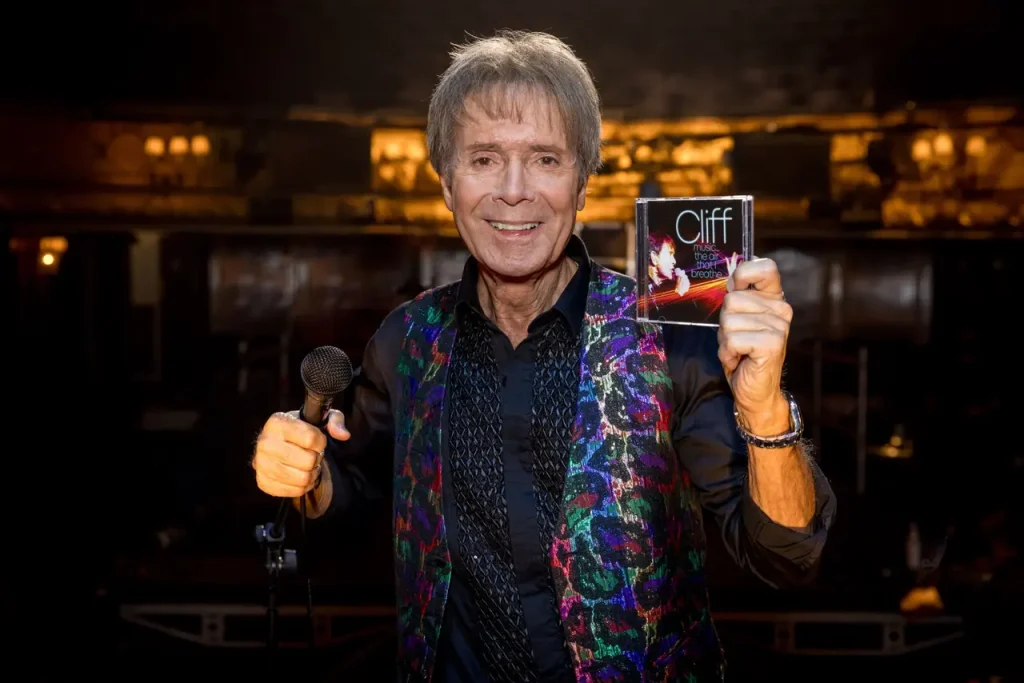
The Timeless Dance of Love and Destiny
In the lush tapestry of musical history, few songs weave a narrative as tender and evocative as “It’s All in the Game” by Cliff Richard. Released during a time when the world was finding its rhythm amidst post-war recovery, this song captured hearts with its soulful melody and timeless lyrics. Its journey on the charts was as remarkable as the song itself, climbing to impressive heights and securing a cherished spot in the annals of music history.
First gracing the airwaves in 1963, Cliff Richard’s rendition of “It’s All in the Game” resonated deeply with audiences around the globe. The song reached an admirable position on the UK Singles Chart, securing its place among the top 10 hits of its time. This achievement was no small feat, considering the competitive musical landscape of the early ’60s, where legends like The Beatles and Elvis Presley were captivating audiences with their groundbreaking sounds.
The story behind “It’s All in the Game” adds an intriguing layer to its allure. The melody of this classic tune was composed by Charles G. Dawes in 1911, long before lyrics were ever added. Interestingly, Dawes was not only a composer but also served as Vice President of the United States under Calvin Coolidge. His piece, originally titled “Melody in A Major,” was transformed into a lyrical masterpiece when Carl Sigman penned words to accompany Dawes’ haunting melody in 1951. This fusion of melody and lyricism eventually became “It’s All in the Game,” a song that would be covered by numerous artists over decades, each adding their own unique flavor to its enduring legacy.
Cliff Richard’s interpretation of this song is a heartfelt exploration of love’s unpredictable journey—a theme that resonates profoundly with listeners who have traversed the intricate dance of relationships. The lyrics speak to the ebb and flow of romantic connections, capturing moments of joy and sorrow that define the human experience. With lines that evoke both nostalgia and hope, Richard’s performance brings an emotional depth that invites listeners to reflect on their own personal tales of love lost and found.
The significance of “It’s All in the Game” lies not only in its beautiful composition but also in its ability to evoke powerful memories for those who listen. For many older adults, this song serves as a bridge to their pasts—a reminder of youthful romances and poignant moments shared with loved ones. It’s a tune that conjures images of slow dances under starlit skies and whispered promises made in the glow of moonlight. Such memories are indelibly etched into the hearts of those who lived through that era, making “It’s All in the Game” more than just a song; it is a vessel carrying cherished recollections across time.
As we revisit this classic hit today, it’s essential to appreciate not only its melodic beauty but also its role as a cultural touchstone. Cliff Richard, often hailed as one of Britain’s most enduring pop icons, brought his signature style and emotional sincerity to this track, ensuring its place in music history. His version continues to inspire new generations while providing solace and nostalgia for those who remember hearing it play on radios decades ago.
In conclusion, “It’s All in the Game” by Cliff Richard remains an iconic piece that transcends generations. Its rich history, combined with heartfelt lyrics and an unforgettable melody, ensures its continued relevance in our collective consciousness. For those who have loved deeply and felt the bittersweet pangs of separation and reunion, this song is more than just notes and words—it is a timeless reflection on love’s unpredictable journey through life’s ever-changing game.